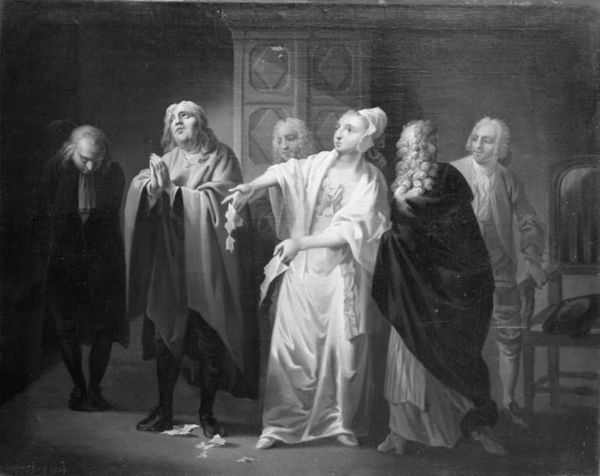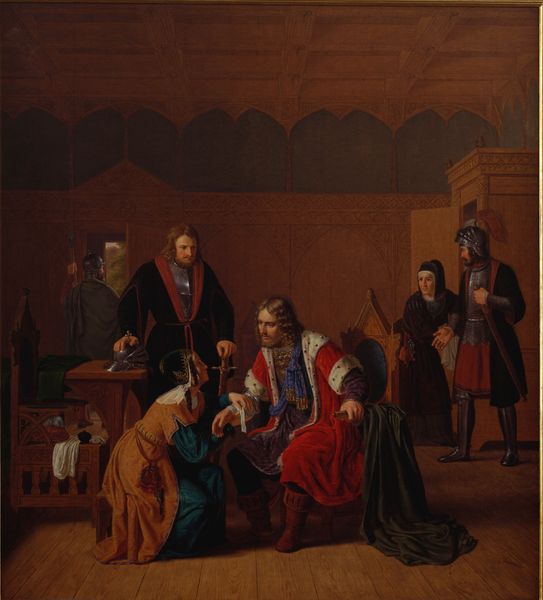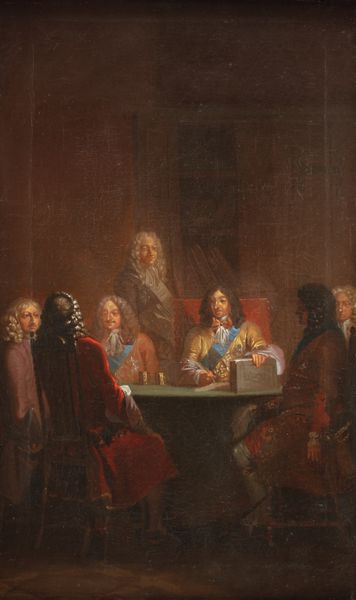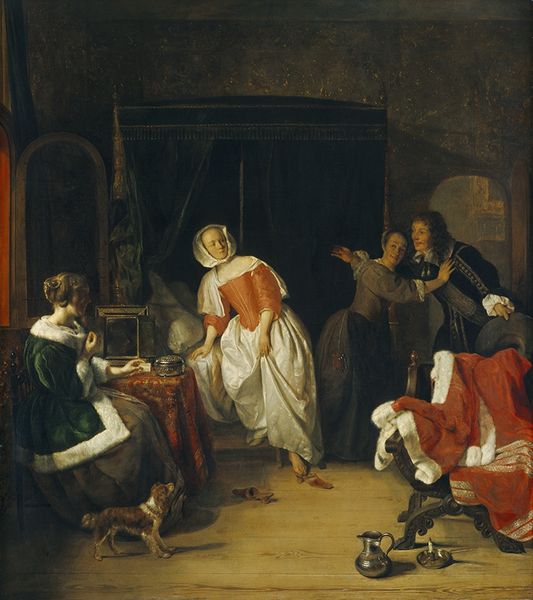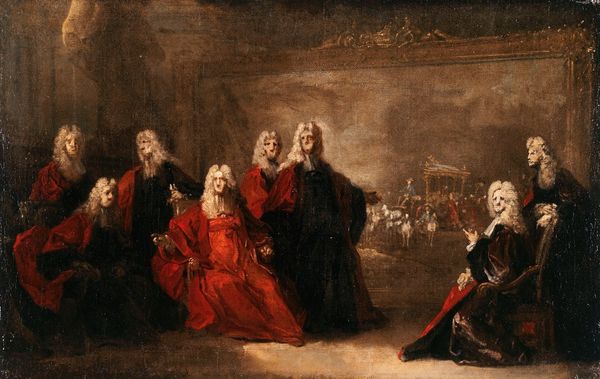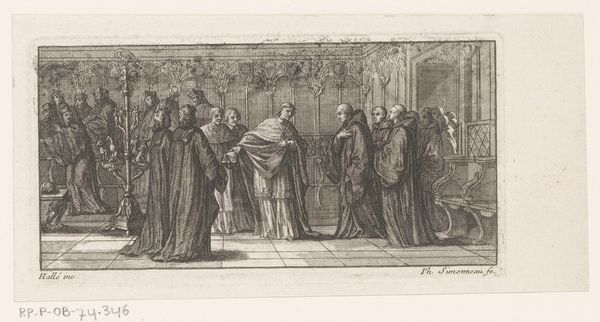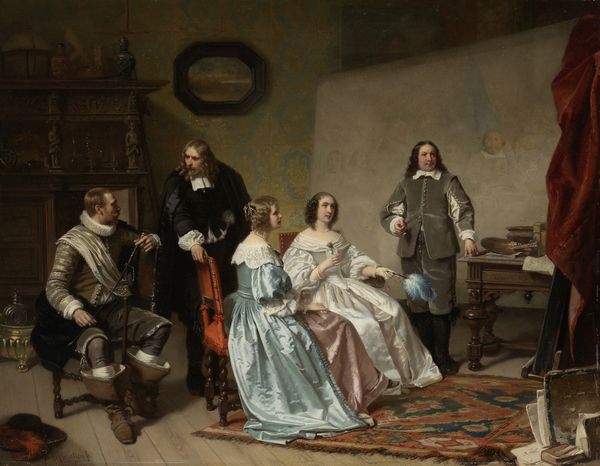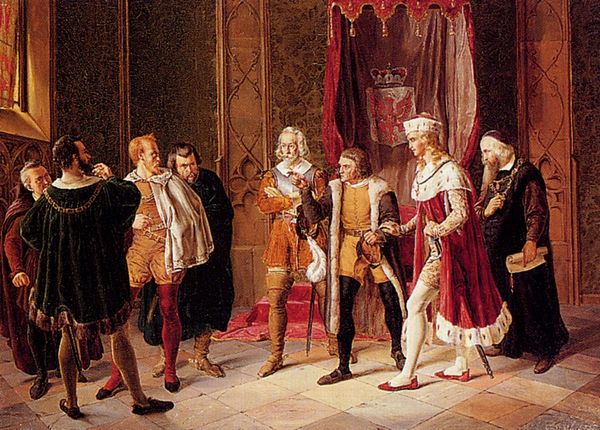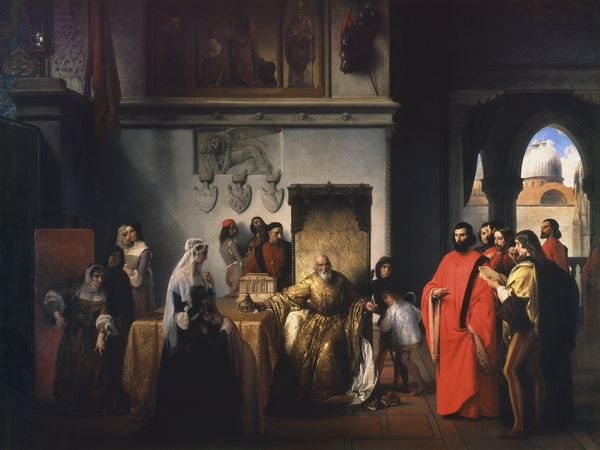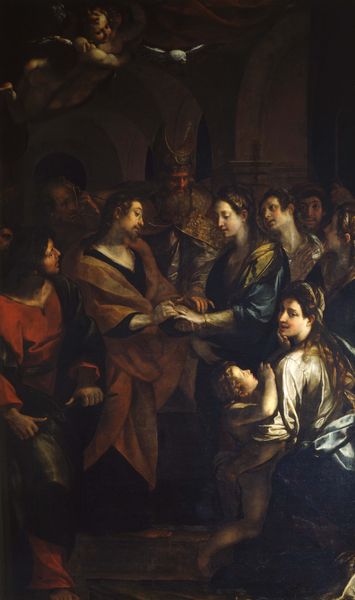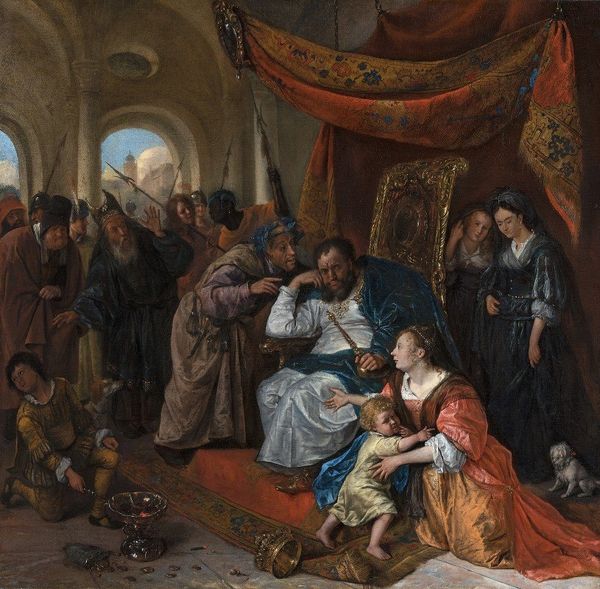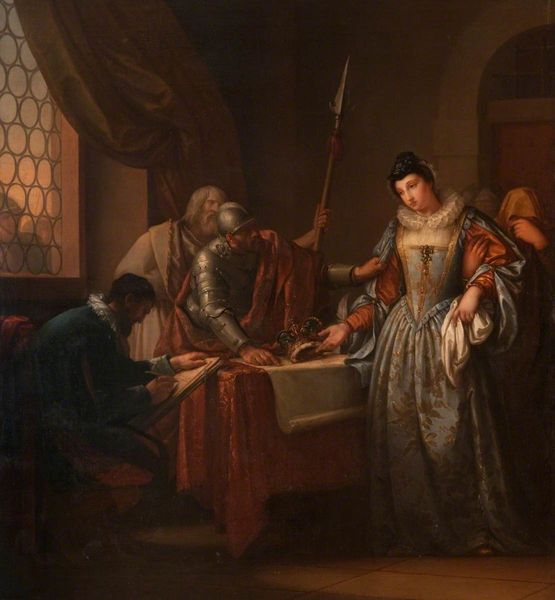
Absolute Monarchy Assigned to Frederik III in 1660 1783
0:00
0:00
Dimensions: 61 cm (height) x 37 cm (width) (Netto), 69 cm (height) x 46.7 cm (width) x 4.8 cm (depth) (Brutto)
Nicolai Abildgaard painted this scene of Absolute Monarchy Assigned to Frederik III around the late 18th century, using oil on canvas. Abildgaard employed traditional painting techniques, carefully layering pigments to achieve a smooth, lifelike representation of the Danish court. The artist would have ground the dry pigment into a binder, like linseed oil, which affects the paint's viscosity, drying time, and finish. Look closely at the details of the clothing, the heavy drape of the fabrics, and the texture of the skin. Abildgaard masterfully uses these materials to create a sense of depth and realism, conveying the weight and authority of the monarchy. But the subject of the painting – the transition to absolute rule – hints at a complex interplay of power, politics, and consumption. The artist's labor, combined with the cost of materials, reflects the economic realities of the time. Examining the materials, making, and historical context enriches our understanding of this artwork, challenging conventional ideas about fine art and its relationship to craft.
Comments
No comments
Be the first to comment and join the conversation on the ultimate creative platform.
